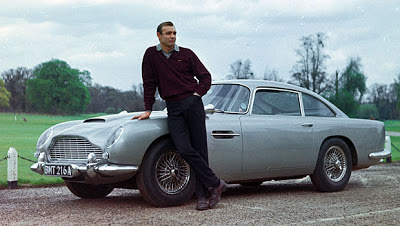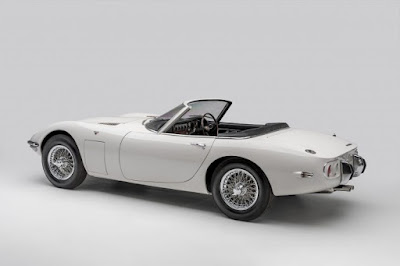When the world's automotive began to look for the ideal shape of the vehicle through a series of models created by scientists. Perhaps you have ever known about the 1920s Auto Union legendary car (the forerunner of today's Audi) which earned the nickname 'ugly duckling,' because of its shape which was very different from the four-wheeled motorized vehicles that existed at the time.
 |
| 1938 Fiat 500A Topolino Hard Top by Zagato participated on the 1938 Mille Miglia (B&W photo colorized). (Picture from: https://bit.ly/3ka0e4D) |
 In the 1930s, when the world was in a very deep recession. At that time, a unique designed vehicle with was born in Germany as a brainchild of Dr. Ferdinand Porsche, which was projected as a people's vehicle which later known as the legendary vehicle of all time called the Volkswagen Beetle.
In the 1930s, when the world was in a very deep recession. At that time, a unique designed vehicle with was born in Germany as a brainchild of Dr. Ferdinand Porsche, which was projected as a people's vehicle which later known as the legendary vehicle of all time called the Volkswagen Beetle. |
| Fiat 500, production version of the 1936. (Picture from: https://bit.ly/2GFU9iR) |
 |
| Designer Dante Giacosa with the Fiat 500 Prototype, Piedmont, Italy, October 1934. Antonio Fessia photo. (Picture from: https://bit.ly/2GFU9iR) |
This tiny car which has a length of about 3.2 meters and also equipped with an engine with a capacity of 569 cc which is capable of producing about 13 hp of power and a topspeed of only 85 kph. As is known, the Fiat 500 Topolino is a car model that Fiat began mass production ranging from 1936 to 1955. It doesn't stop there, it turns out that the legendary Fiat 500 model was then continued by various of modern Fiat city car models to date.
 |
| Fiat 500C cross-sectional view showing restyled nose, built-in headlamps and enclosed spare wheel compartment. (Picture from: https://bit.ly/2GFU9iR) |
 Apart from being a mass-produced road legal vehicle, the Fiat 500 Topolino model was also used as the base of racing car to compete in various world racing events at that time. In the same time also Fiat was looking for the right formula for their racing cars based on the Fiat 500 Topolino that were going to compete in various racing events, so then the Italian auto manufacturer commissioned its compatriot coachbuilder Zagato to prepare the vehicles.
Apart from being a mass-produced road legal vehicle, the Fiat 500 Topolino model was also used as the base of racing car to compete in various world racing events at that time. In the same time also Fiat was looking for the right formula for their racing cars based on the Fiat 500 Topolino that were going to compete in various racing events, so then the Italian auto manufacturer commissioned its compatriot coachbuilder Zagato to prepare the vehicles. |
| 1938 Fiat 500A Topolino Hard Top by Zagato. (Picture from: https://bit.ly/36iredd) |
As quoted from the Zagato website, at that time the famous coachbuilder from Italy made at least 6 different car models ranging from coupes to barchetta (1937 Fiat 500 A Topolino Zagato Aerodinamica I, 1937 Fiat 500 A Topolino Zagato Aerodinamica II, 1938 Fiat 500 A Topolino Zagato Aerodinamica IV, 1938 Fiat 500 A Topolino Hard Top Zagato, 1938 Fiat 500 A Topolino Zagato Aerodinamica III, and 1938 Fiat 500 A Topolino GS Zagato), but the whole models taken the base of the Fiat 500 Topolino with the elongated hood and rounded body seemed to be a trend in the 1920s to 1930s so that at that time it was widely applied to four-wheeled vehicles that prioritized speed.
Of course, these elongated hood with rounded body design were intended to create the car's perfect aerodynamic factor due to the car was built for racing purposes which is identic with speed. The Topolino based racing car with removable hardtop was one of 6 Zagato's designed cars that had ever participated on the 1938 Mille Miglia. *** [EKA | FROM VARIOUS SOURCES | ZAGATO | AUTOUNIVERSUM ]
Note: This blog can be accessed via your smart phone
















































